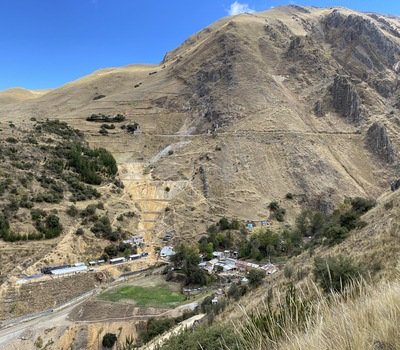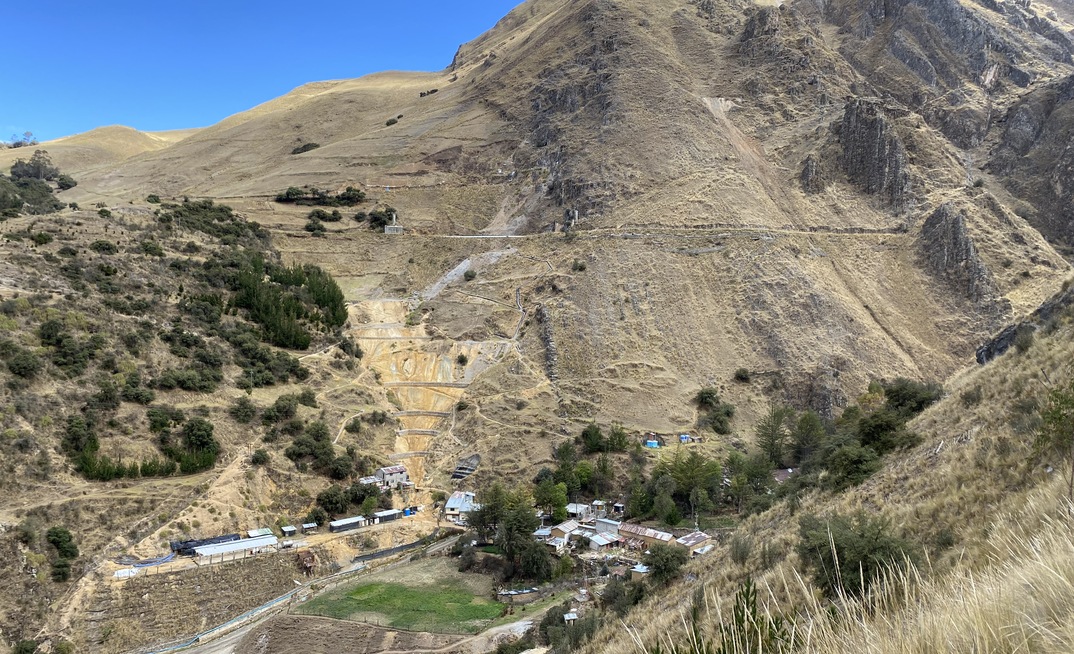Holly Williams | Senior Consultant (Geotechnical Engineering) | SRK Canada
Cesar Oboni | Principal Consultant (Risk) | SRK Canada
Quantitative risk assessments are an essential tool for managing current climate change challenges, especially as they apply to mine closure problems.
Mine closure designs are intended to function for very long timespans and comprise many components that are vulnerable to changes in climate. For example, increased rainfall intensity and frequency of extreme events could compromise dam stability and result in more frequent dam failure rates. Changes in snowpack, rain-on-snow events, and faster melting could increase freshet events, and overwhelm diversion and water management structures. Changes in temperature could have major implications in northern areas where dams rely on frozen cores for water retention or maintaining permafrost for slope and foundation stability. Any changes in precipitation, runoff, evaporation, and percolation will affect water and energy balances and compromise cover system performance and may necessitate more frequent maintenance and repairs. Many of these components are also interrelated, and failures of any can have multidimensional consequences that include environmental, economic, and social impacts.
Operators and engineers routinely collect lots of information on each of these components, but often lack appropriate tools to cut through the noise and deal with uncertainty. This is where quantitative risk assessments can help. When implemented correctly - including input from key stakeholders - they can provide a clear roadmap for prioritizing mitigations and making decisions that will have the biggest impact on risk. Specific factors that set our approaches apart include the ability to benchmark against a global portfolio and built-in strategies for quantifying multidimensional consequences that incorporate latest advancements from other industries.
This overall approach is firmly rooted in the belief that if we can't measure it, we can't manage it. Quantitative risk assessments empower decision-makers to make informed choices that will give them the best chance of long-term mine closure success amidst an uncertain future.
Marcela Curotto | Principal Consultant (Geochemistry, Mine Closure & Environment) | SRK Chile
The benefits of integrated planning or incorporating the closure phase into planning, is not a new procedure for the vast majority of today's mining companies. This long-term vision of considering closure from the very start of a project increases the probability of both closure and post-closure success, given that the mine is designed with the closure objectives in mind.
Mine closure planning and mine planning should work in parallel. The joint effort between mine planners and those in charge of closure planning during the operation is

Closure Engineering for San Sebastian Project_Sergio Panduro Guerro
key so that at the end of the useful life, the planned closure objectives and costs are met while minimizing the company's risks.
However, the mining industry has grown at different rates around the world, and therefore, this long-term vision has been incorporated after 15 or 20 years of operation. It is in these cases where the closure of mining sites and their planning becomes an important challenge, mainly due to the lack of historical information. An initial site study is undertaken, which may span several years before adequate closure measures and costs can be defined. On the other hand, closure planning extends beyond operational considerations, involving collaboration with various internal and external stakeholders. This approach is necessary to consider the diverse points of view, knowledge, and expectations, to obtain results that meet the defined success criteria.
Nicole Dunne | Consultant (Geochemistry) | SRK Australia
With global surface temperatures continuing to increase, the widespread and rapid changes that are being observed are altering the way we live, operate, and do business. Given that mining is often done in remote and challenging conditions to begin with, our industry's resources and ingenuity in adapting to climate change are being tested like never before.
The most dramatic of these changes is the frequency and intensity of more extreme weather conditions and the oscillations between them. A mine site can be battling an extreme rainfall event facing increasing risks to infrastructure, operations, and health and safety at sites through flash flooding and erosion within a long and intense drought period where annual rainfall is well below average. This makes surface water management more critical to sustainable operations throughout these extreme oscillations. Soils exposed to prolonged droughts become hard and often water-repellent; when extreme rainfall occurs on these soils, surface run-off and erosion becomes more dangerous. To ensure adequate continuous water supply in times of drought, mining companies are reaching for alternative solutions, such as, renewable energy fueling desalination plants, water sharing hubs with nearby communities, facilities, and other mines, as well as aquifer injection to store excess water in times of high rainfall.

Mine Drainage Chemistry Copper Precipates
Furthermore, prolonged drought and rising global surface temperatures lead to an increased risk of wildfires in areas previously considered low risk. This poses significant threats to operations and the protection of assets, as well as key mining activities such as rehabilitation and closure planning.
The mining community can support each other to mitigate some of these threats by undertaking practices such as sharing knowledge of fire management protocols around mine sites and pooling resources to investigate rehabilitation protocols under a changing climate.
With record‑breaking fire seasons becoming increasingly common worldwide, creating resilient mining operations is key to ensuring the industry can continue to operate sustainably.
Climate change effects such as extreme weather conditions, water management challenges, and the increased risk of wildfires emphasize the need to integrate closure objectives early and throughout mine planning. Carried out within a collaborative, transparent framework, integrated closure planning offers the actionable insights needed for informed climate-adaptation decision-making.
ABOUT THIS COMPANY
SRK Consulting
SRK Consulting is an independent, international group providing specialised consultancy services. Among SRK's clients are many of the world's mining companies, exploration companies, financial institutions, EPCM and construction firms and government bodies.
OFFICE:
- SRK Consulting (UK) Limited, 5th Floor, Churchill House, 17 Churchill Way, Cardiff, CF10 2HH, Wales, UK
- Phone: +44 (0) 2920 348 150
- Fax: +44 (0) 2920 348 199
- Web: www.srk.com
- Email: info@srk.com

























